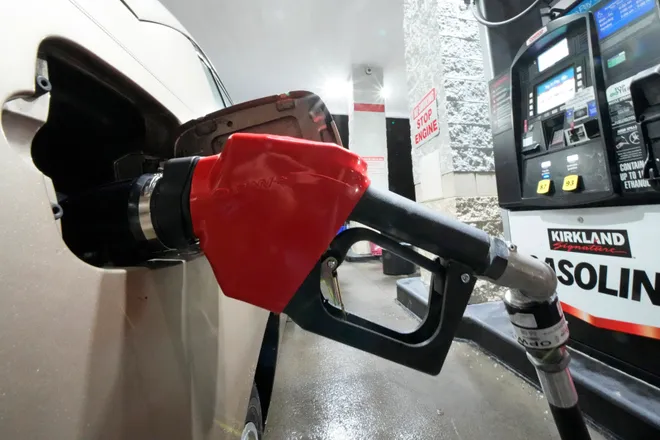Americans face more sticker shock at the pump as gas prices hit 10-month high. Here's why
Gas prices have been climbing again, hitting the highest level since October 2022, according to motor vehicle club AAA.
The national average price for a gallon of unleaded gasoline this week reached $3.87, 31 cents higher than last month and a nickel more than just last week, AAA said. The price is still below the $3.93 people paid one year ago, but Patrick De Haan, head of petroleum analysis at gas price tracker GasBuddy, sees the potential for prices to rise above that before summer ends.
That increase could derail budgets for Labor Day travel and fan inflation again, analysts said. Gas prices are getting perilously close to $4 per gallon, seen as a tipping point for Americans, AAA said. Among 1,051 Americans AAA surveyed in February 2022, 59% said they would make changes to their driving habits or lifestyle if the cost of gas rose that high.
While July inflation data “looked pretty good with energy prices well below their year-ago level, August data isn’t going to look nearly as friendly,” De Haan said. Annual inflation in July rose 3.2%, down sharply from July 2022’s 8.5%.
Why are gas prices climbing?
Gas prices reflect the steady rise in oil costs since June and a slowdown at refineries as record heat bakes portions of the nation. Add to those issues a new concern: hurricane jitters.
Protect your assets: Best high-yield savings accounts of 2023
- Oil prices account for about half the price of a gallon of gasoline, followed by refining costs. Refiners convert oil into usable products like gasoline.
Oil prices have been rising partly from production cuts by Saudi Arabia and the Organization of the Petroleum Exporting Countries and its allies (dubbed OPEC+) and soaring demand. August saw record world oil demand, boosted by strong summer air travel, increased oil use in power generation and surging Chinese petrochemical activity, the International Energy Agency said in a report.
- Extreme heat across the nation prevents refineries from running at full capacity. AAA estimates extreme heat shut down 500,000 barrels per day of refining capacity this summer. “Petroleum engineers can tell you that when ambient temperatures get to the 100-degree neighborhood, it is difficult to run at maximum levels,” said Tom Kloza, global head of energy analysis at Oil Price Information Service.
Accuweather predicts that the heat dome that's been scorching the southern United States for weeks will expand across more of the central part of the country this weekend into next week.
- Hurricane season has begun, with Hurricane Hilary forecast to affect southern California, parts of Nevada and Arizona this weekend. Even if Hilary doesn’t inflict pain on the oil and gas industry, the risks of a storm that could cause problems have risen. National Oceanic and Atmospheric Administration forecasters this month increased the likelihood of an above-normal Atlantic hurricane season to 60%, up from 30% in May. “The U.S. is especially vulnerable to supply issues for a strong storm that strikes between Corpus Christi, Tex. and the Beaumont-Pt. Arthur, Tex. coastline,” Kloza said, referring to an area with a concentration of refineries.

How high can gas prices go?
Weather is the wildcard, analysts said.
“These looming weather concerns are a roadblock to falling pump prices,” said Andrew Gross, AAA spokesperson.
If a hurricane hits Gulf refineries, supply could be curtailed and gas prices would rise not just in the U.S. but across the world, Kloza said.
Caught in the middle:President Biden faces criticism from oil and gas, environmentalist after New Mexico visit
Where is gas the most expensive?
According to the latest from AAA,
- California, $5.18
- Washington, $5.03
- Hawaii, $4.79
- Oregon, $4.69
- Alaska, $4.49
- Nevada, $4.42
- Utah, $4.23
- Arizona, $4.19
- Illinois, $4.17
- Idaho, $4.10
Kloza said he expects California, Nevada and Arizona prices to rise this weekend due to the possibility of Hurricane Hilary strikes.
Medora Lee is a money, markets, and personal finance reporter at USA TODAY. You can reach her atmjlee@usatoday.com and subscribe to our free Daily Money newsletter for personal finance tips and business news every Monday.
Disclaimer: The copyright of this article belongs to the original author. Reposting this article is solely for the purpose of information dissemination and does not constitute any investment advice. If there is any infringement, please contact us immediately. We will make corrections or deletions as necessary. Thank you.







